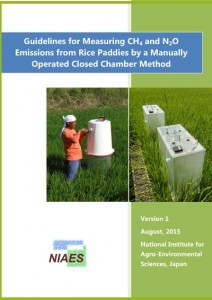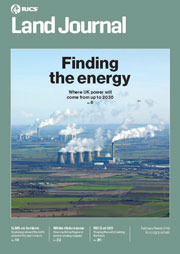A session on Soil Denitrification will be held at the 2019 Soil Science Society of America (SSSA) International Soils Meeting, entitled “Denitrification in Agricultural Soils: Integrated Control and Modelling at Various Scales” Jan 6 -9 in San Diego.
Denitrification is the key process returning reactive nitrogen to the atmosphere. Despite being intensively studied for more than 100 years, soil denitrification rates and emissions of its gaseous products can still not be satisfactorily predicted. The complexity of the process in response to highly temporally and spatially variable soil properties (matrix to field scale) prevents robust prediction of denitrification rates and gaseous emissions.
Keynote speakers:
Peter Groffman, Cary Institute of Ecosystem Studies (to be confirmed)
Marcus Horn, Institute of Microbiology, Leibniz University Hannover (to be confirmed)
N.N.
Call for papers
Oral or poster contributions are invited. Topics include interactions between effects of key factors on denitrification and its gaseous emissions, and modelling of these processes at scales from matrix to field.
Early registration is until July 24; final registration is Aug 8.
A special issue of Land Journal, with guest editors Dr. Matt Bell & Dr. Matthew Harrison, will present current research regarding the measurement and modelling of greenhouse gas emissions from agricultural production, including land used for crops, livestock, grassland and woodland. Considerable research into sources and sinks of emissions from agriculture has been carried out in recent years to improve our ability to quantify emissions and to assess mitigation options at the farm level. Loss of carbon in the form of methane or carbon dioxide, and nitrogen in the form of nitrous oxide, make up pollutants associated with global warming and climate change. Agriculture is a notable source of enteric methane emissions from ruminant livestock, as well as methane or nitrous oxide emissions from manure and land. Alternatively, grassland or woodland areas can provide an opportunity to sequester atmospheric carbon. Papers exploring these dynamics associated with agricultural land use are welcomed.
Developments in gas monitoring and modelling capabilities now provide new insights into land management options for reduced greenhouse gas emissions for more sustainable food production systems. Papers should cover some aspect of measuring or modelling gas emissions at the farm level.
Submit papers by 1 October 2018 to: http://www.mdpi.com/journal/land/special_issues/agricultural_GGE
Australia’s Nitrous Oxide (N2o) Network’s website has updated their website.
The network comprises a growing compendium of resources from Australian and international collaborators regarding N2O and associated non-CO2 emissions from agricultural soils. Following a funding proposal in with the Australian government to expand the network, datasets from their international projects and collaborations are being updated to the site.
The National Institute for Agro-Environmental Sciences (NIAES) has announced the media release of the new publication, “Guidelines for Measuring Methane (CH4) and Nitrous Oxide (N2O) Emissions from Rice Paddies by a Manually Operated Closed Chamber Method”.
The guidelines are supported by the MIRSA-2 project “Technology development for circulatory food production systems responsive to climate change (Development of mitigation option for greenhouse gas emissions from agricultural lands in Asia)”, and funded by MAFF, Japan, to support the goals and objectives of the Paddy Rice Research Group of the Global Research Alliance.
A position (up to 2.5 years) is available for a postdoctoral fellow who will be responsible for measuring nitrous oxide fluxes from grazed pastures systems based at the University of Waikato, Hamilton, New Zealand. The project will be purchasing equipment that allows eddy covariance measurements of nitrous oxide and the successful candidate will help install and maintain the equipment, collect data, interpret and write papers in this newly-developing field of research. The successful applicant will be part of a team measuring carbon dioxide and water fluxes from pastures and wetlands. The team’s goal is to find management practices that decrease the greenhouse gas burden on the atmosphere while maintaining production. Further details about the team and its research can be found on www.waiber.com. The full position description can be viewed at the University of Waikato, vacancy page: www.jobs.waikato.ac.nz, where applications should also be made. Enquiries of an academic nature should be directed to Professor Louis Schipper, email: [email protected].
UPDATE: New link to the 2020 revised guidelines
The Nitrous Oxide Chamber Methodologies page has now been added to the website. The full guidelines document can be downloaded on the page, or individual chapters. The document provides internationally agreed reference guidelines for measuring N2O emissions using chamber methodologies, so as to inform the production quality N2O flux measurement data and improve inter-comparability between international studies.
The University of Reading’s Centre for Dairy Research (CEDAR) hosted the Global ReseArCH4 inveN2Ory workshop on Friday 31 October. This UK workshop supported the work of the Global Research Alliance and was an opportunity for academics and industry from across the world to view the latest measurement techniques, particularly around methane and nitrous oxide emitted by livestock, soil and manure. Follow the media links below to read more about the workshop
http://www.farmbusiness.cc/news.asp?section=248&newsid=10869
http://www.nfuonline.com/News/The-tricky-task-of-measuring-GHG-emissions/
Canada’s Agricultural Greenhouse Gases Program (AAGP), represents a five-year, $27-million initiative that focuses on the development of on-farm greenhouse gas (GHG) mitigation technologies and is Canada’s initial contribution to the Global Research Alliance. The AGGP will provide funding to various partners across Canada to investigate innovative mechanisms, tools and approaches to provide real solutions for the agriculture sector.
The AAGP is funding Nova Scotia Agricultural College in a project to advance and develop greenhouse gas mitigation technologies that will allow producers to understand and apply nitrogen in a more efficient, cost-effective and environmentally responsible manner, thereby reducing its impact on air and water quality. This will lead to better soil fertility, reduced nitrous oxide emissions, and a decrease in other environmental impacts, such as water contamination. Read the full article


